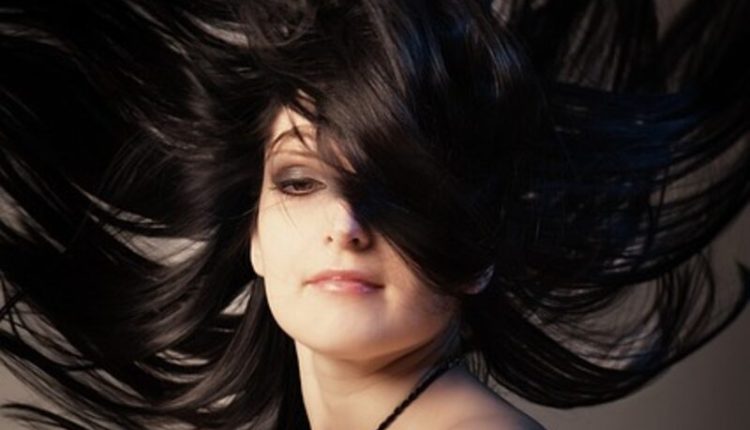Those of African heritage tend to have hair and hair follicles that are naturally curly and coiled. Furthermore, black hair has been found to have a wider diameter and less water retention than Caucasian hair, contributing to its relative “kinkiness.” There is worry about hair loss because of the numerous ways in which Black hair is styled. Black hair styles put a lot of strain on the hair and scalp, so it’s a good thing that black hair is resilient.
Using a hair pick to create a bushy style, for instance, puts a lot of strain on the hair shaft and the follicle due to the frequent pulling. In fact, regular combing can put a lot of strain on Black hair, leading to damage and split ends that only serve to exacerbate the problem of dryness. Hairstyles like cornrows and braids put a lot of tension on the hair and scalp, which can lead to breakage and thinning. Traumatic alopecia, which is caused by trauma to the hair and scalp, can be triggered by overly tight braiding. In most cases, with the right hair care, traumatic alopecia can be reversed.
Damage to the hair and scalp by the use of hot combs and relaxers, which can also induce traumatic alopecia, can lead to the gradual and irreversible loss of hair. This is exacerbated when the hair is squeezed tight by rollers or a hot curling iron after being subjected to heat or chemicals.
Because of the proteins and polymers included in hot oil treatments, which are essential to mending the hair cuticle, hot oil conditioners are great for Black hair. To do a hot oil therapy, you just heat the oil, apply it to your scalp and hair, then cover your head with a plastic hat. For the recommended period of time to leave the treatment on the hair, refer to the product’s instructions. The end result is repaired, stronger, and more shiny hair.
Keep in mind that the lye and other chemicals in the hair relaxers typically used on Black hair cause the hair shaft to get damaged. If these chemicals were left on for longer than suggested, they would chew through the hair and cause it to fall out in chunks. Because of this, similar ingredients can be found in drain-clearing solutions like Drano®. The widespread belief that no-lye relaxers are non-acidic has contributed to their widespread use in recent years. Quite the opposite is true. Guanidine hydroxide, made by reacting calcium hydroxide with guanidine carbonate, is an effective sink cleaner. Hair thinning is a common side effect of taking these products, and it might become permanent if scarring occurs on the scalp at the site of application. If you want to look a certain way, you could be tempted to use harsh chemicals on your hair on a frequent basis. Each person is responsible for answering the question on their own, however informed judgment is advised.
Unless African-American hairstyles are altered, there is little that can be done to help with this condition. Because combing natural Black hair causes so much stress and breaking of hair, and because chemicals cause so much harm to the hair and scalp, there is a catch-22 about relaxing Black hair. Some chemical hair relaxers on the market are gentler than the widely used sodium hydroxide (lye) or the “no-lye” alternative, which is a combination of calcium hydroxide (quicklime) and guanidine carbonate. Baka ProductsTM, which has been around since 1990, produces a few similar items, including Natural-Laxer® and Sahara Clay®. This product is all-natural and said to be somewhat harmless because it comprises simply a finely crushed plant called Daphne Gnidium and clay from Africa, as opposed to the many harsh chemicals found in commercial relaxers. While it’s true that this lotion won’t straighten hair quite like professional relaxers, it will make Black hair much easier to control. Another product available, Naturalaxer Kit In A Jar(TM), claims to be 92-96% natural and minimizes harm to the hair by eliminating the need to comb through it during application.
If you can manage to keep your hair in its natural form, you will reduce at least one cause of hair loss: the stress and damage that styling causes. More and more Black people are feeling confident rocking their hair in its natural state. Dreadlocks are one such fashion trend. Dreadlocks have been the subject of many urban legends and misconceptions since so little accurate information has been shared about the trend. Dreadlocks may and should be washed, just like any other type of dirty hair. Dreadlocks should be washed using a shampoo that leaves no residue. The myth that hair has to be dirty in order to produce dreadlocks was perpetuated by the fact that most commercially made shampoos leave residue and can prevent hair from locking. In fact, unclean hair has a harder time locking than clean hair does because dirt acts as a residue. The most effective shampoo is one without conditioner or smell. Oily and greasy products should be avoided if you want your dreadlocks to last, but there are many of great ones available now to help you get the look you want.
Dreadlocks are not developed automatically when one stops combing or brushing their hair. Beginning with hair that is about two inches long, one should section the hair into even squares of hair and gently twist the squares together using a bonding or gel solution. Many people use petroleum-free natural beeswax, while others rely on loc and twist gels made especially for locks. It is essential to let the locks of hair join organically once they have been parted and twisted. The time it takes for your hair to lock depends on its coarseness, but in general, you should wait many months. It’s important to wash the hair when it’s in the locking phase. Here’s where you should delay washing for as long as you can, so you can give your hair anywhere from two weeks to a month to lock without touching it. Washing your hair should be done with low-pressure water and a stocking cap or “do-rag” to protect the newly formed locks. Because the water will be less forceful and you won’t be able to directly manipulate your hair, you’ll need to rinse for a lot longer than usual. The water aids in the hair-locking process and is therefore not a cause for concern. As said before, it’s also crucial to use a shampoo that doesn’t double as a conditioner and that rinses out cleanly. You’ll need to do some investigating, but the health food store probably has a selection of organic shampoos. Re-twist the hair carefully with the aid of a professional or a friend, reapplying the twist gel or beeswax you used before. If you can wait a few months, your hair will begin to lock after you repeat this method every two weeks to a month.
Again, if your hair is on the finer side rather than the kinkier side, you may want to seek the advice of a lock-forming expert (“locktitian”) or a close friend who is already familiar with the style. Dreadlocks may be most commonly associated with persons of African descent, although they are certainly not exclusive to that group. In the long run, this is the kind of hairstyle that can help your hair last longer by relieving the stress caused by frequent chemical and heat treatments as well as excessive brushing and combing.
WWW.THEWESTMINSTERPRACTICE.COM
Read also: Exactly what is Reiki And How Can It Assist you Heal?


